How To Connect Batteries In Series and Parallel
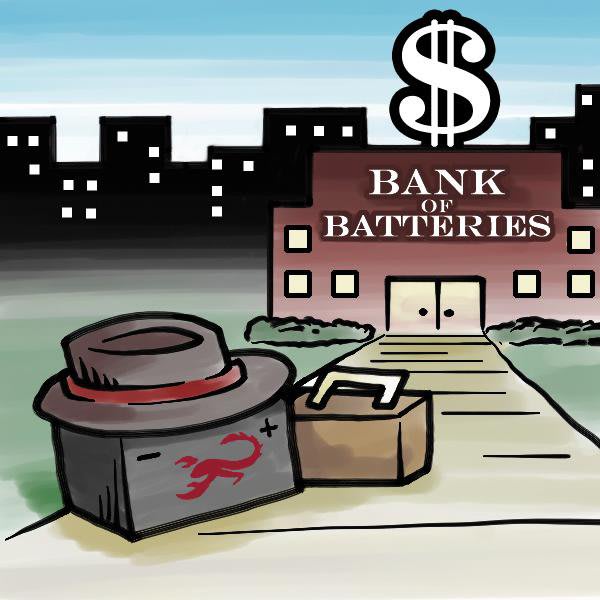 What is a battery bank? No, battery banks are not some financial battery establishments. A battery bank is connecting two or more batteries together for a single application. You might ask, what does this accomplish? By linking batteries together, you can increase the voltage, capacity (AH / Wh), or both.
What is a battery bank? No, battery banks are not some financial battery establishments. A battery bank is connecting two or more batteries together for a single application. You might ask, what does this accomplish? By linking batteries together, you can increase the voltage, capacity (AH / Wh), or both.
When you need more power, you can construct a battery bank using widely available batteries. For instance, using a common group-size battery such as a group 24, group 27, group 31, or golf cart GC2 group size is much more affordable than purchasing a heavy group 4D or 8D battery for your RV, camper, trailer, or boat.
Before proceeding with this tutorial, we would like to point out that batteries should only be connected if they are of the same voltage, capacity rating, and are of the same batch. Otherwise, you may end up with charging problems and shortened battery life.
The first thing you need to know is that there are three primary ways to successfully connect batteries: The first is via a series connection, the second is called a parallel connection, and the third option is a combination of the two called a series-parallel connection.
How to wire batteries in series:
Connecting batteries in series increases the voltage of a battery pack, but the AH rating (also known as Amp Hours) remains the same. To connect batteries in a series, a jumper wire connects a battery's negative terminal to another battery's positive terminal. This leaves you with a positive terminal at the beginning of the battery pack and a negative terminal at the end of the battery pack for your application.
For example, the image below shows two 12-volt batteries wired in series, producing a 24-volt battery pack with a total capacity of 35 AH. Remember, only the voltage goes up in series, the AH remains the same. 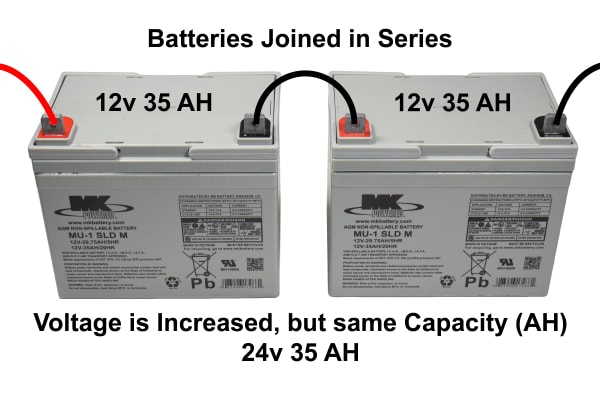
We often get asked, “How do you create a higher-voltage battery pack?” The answer is you keep connecting batteries in series. For example, our next image shows three 12v batteries in series to create a 36v 35 AH battery pack. 
For our last series example, below are four 12v batteries in series to create a 48v 35 AH battery pack. 
When connecting batteries in series: Never cross the remaining open positive and negative terminals with each other, as this will short-circuit the batteries and cause damage or injury.
How to wire batteries in parallel:
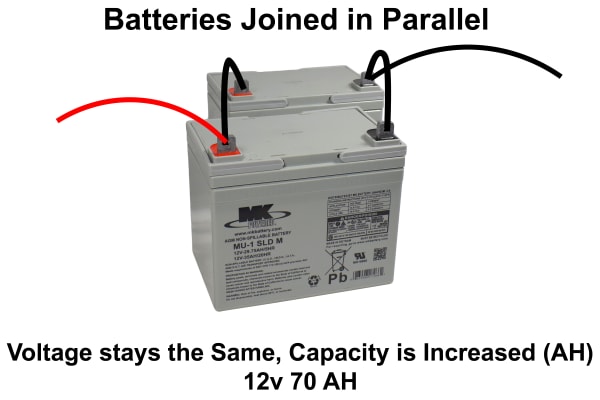
To join batteries in parallel, use a jumper wire to connect positive terminals together, and another jumper wire to connect negative terminals together. This establishes negatives to negatives and positives to positives. You CAN connect your load to ONE of the batteries, which will drain both equally. However, the preferred method for keeping the batteries equalized is connecting to the positive at one end of the battery pack and the negative at the other end.
How to wire in a series-parallel configuration:
If you have two sets of batteries connected in series, you can wire both sets into a parallel connection to make a series-parallel battery bank. In the images below we will walk you through the steps to create a 24 volts 70 AH battery pack.
Don't get lost now. Remember, electricity flows through parallel or series connections as if it were a single battery. It can't tell the difference.
Therefore, you can parallel two sets of batteries that are in series to create a series-parallel setup.
Creating a series-parallel battery bank:
Step 1 - Series First
First, we recommend putting each set in series first. To do this, you will use a jumper between the inner positive and negative terminals of each set to increase the voltage, as seen in the picture below:
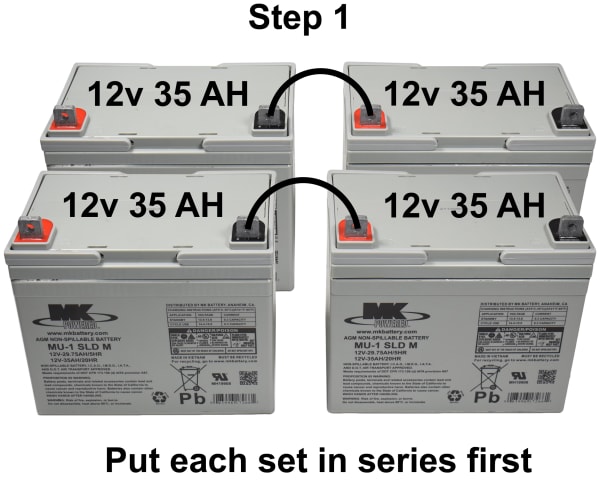
Step 2 - Parallel Each Series Set:
Once each set has been put in series, you can use jumpers to parallel each set together. Basically, the outer positives to positives and outer negatives to negatives, as seen in the final picture below:
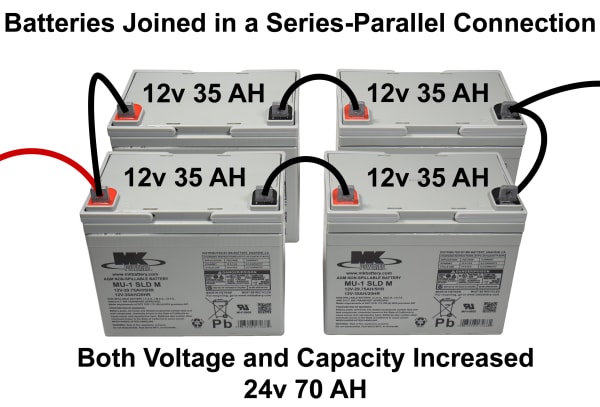
In other words, there is no right or wrong method. However, most customers prefer to put their batteries in series first because it allows them to use onboard desulfators more effectively to extend battery life.
Don’t be concerned if a terminal has more than one cable connected to it. It's necessary to construct these kinds of battery banks successfully.
In theory, you can connect as many batteries as you want. But when you start constructing a tangled mess of batteries and cables, it can be very confusing, and confusion can be dangerous. Keep in mind the requirements for your application, and stick to them. Also, use batteries of the same capabilities. Avoid mixing and matching battery sizes wherever possible.
Always remember to be safe and keep track of your connections. If it helps, make a diagram of your battery banks before attempting to construct them. Good luck!
Quick Vocabulary Reference:
AMP Hour is a unit of measure for a battery's electrical storage capacity. A manufacturer will subject the battery to a specific amp draw over a 20 hour timeframe in order to determine the AH capacity. The amp/hr rating can significantly change based on the given load applied for more information see our article: Peukert’s Law | A Nerd’s Attempt to Explain Battery Capacity.
Voltage represents the pressure of electricity. Some applications require more "pressure," meaning higher voltage.


